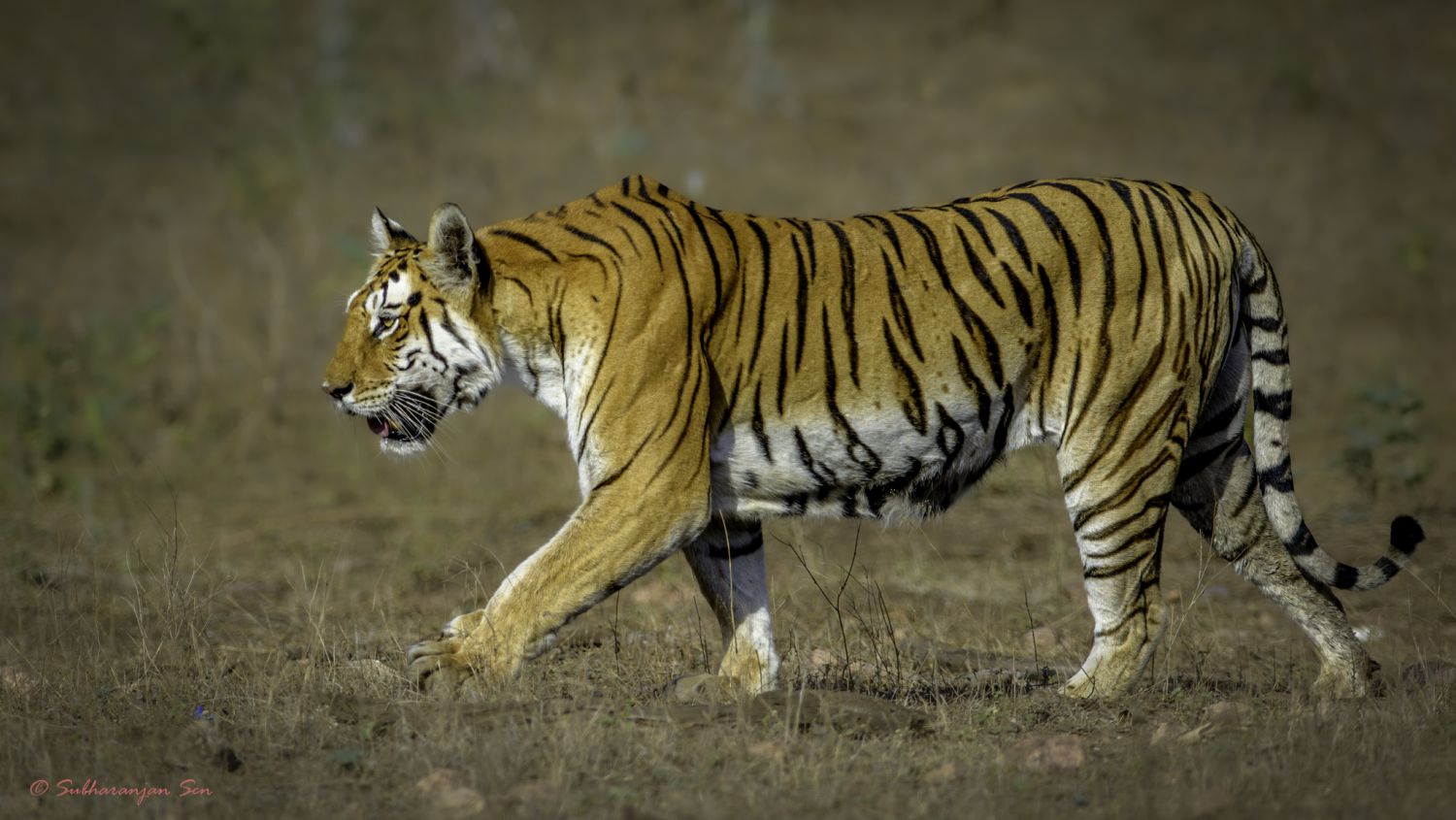Monitoring in Tiger Reserves

There is a growing understanding that monitoring is an essential component of effective conservation practice. Yet, it is seldom clear why monitoring is taking place and how monitoring results will be used to produce intangible improvements in the effectiveness of conservation actions. Monitoring is typically considered as mere research and consequently a luxury in protected area management.
Monitoring should be a central and operational component of all conservation management activities, because if we cannot measure and assess what impact we are having on the conservation of biodiversity, we can never adapt our assumptions and management practices and thus improve the effectiveness of our conservation actions. Monitoring should not be considered a dispensable luxury, but an essential tool for adaptively managing conservation actions as conditions change and we learn from our efforts.
Monitoring can be expensive and therefore it is important to think very strategically about what to monitor and where to monitor. Monitoring should focus on assessing the outcome of management actions specifically designed to resolve some threat to biodiversity conservation. Monitoring should be able to track, using specific measures of change, progress in achieving the target condition. Monitoring should also lead to a response when expected results are not achieved and a change in management actions is required.
Details of Monitoring activity and monitoring methodology:
- Type of Monitoring
- Phase-IV & Phase-I- Patrol Form- (NTCA)
- Patrol Format – (WNW)
- Phase-IV-Field format for collection in Distance Sampling- (NTCA)
- Phase-IV-Location of Transect in relation to vegetation & terrain features- (NTCA)
- Phase-IV& Phase-I-Track plot for carnivores and mega herbivores (Pressure Impression Pad) – (WII- NTCA)
- Format for daily monitoring of camera traps (Beat-wise) – (NTCA)
- Format for tiger & leopard trap occasion (Day) -(NTCA)
- Camera Trap capture data- Range Level- (NTCA)
- Format for Camera trap location- (NRCTPT)
- Format for tracking the camera trap and image data collection- (NRCTPT)
- Format for the details of captured tiger & leopards
- Format for the photo capture details of tigers (from both flanks) – (NRCTPT)
- Format for the yearly temporary tiger ID of entire state-(NRCTPT)
- Daily Patrolling Format for Wildlife occurrences & Waterhole Monitoring in & around Compartment
- Phase-I-Data Sheet for encounter rate-(WII-NTCA)
- Patrolling Form for Special Tiger Protection Force-(WNW)
- Agility-Swiftness and playfulness of Wild Animals- (WNW)
- Feeding Observation of Wild Animals- (WNW)
- Monitoring Format for Wildlife Disease- (WNW)
- Monitoring of the Habitat Stressors for wildlife-(WNW)
- Observations related to Breeding-(WNW)
- Wildlife Health Monitoring Format-(WNW)
- Datasheet for the Assessment of the Functionality and Potentiality of Existing Wildlife Corridors-(WNW)
- Datasheet for floristic inventory-(WNW)
- Datasheet for major plant communities-(WNW)
- Datasheet for Point Sampling for Ground Cover-(WNW)
- Datasheet for Area Sampling for Ground Cover-(WNW)
- Datasheet for measurement of shrubs and tree layer-(WNW)
- Datasheet for Block Count-(WNW)
- Datasheet for Dung/ Pallet Count
- Proforma for Waterhole Census-(WNW)
- Datasheet for animal monitoring (Road-side count)-(WNW)
- Datasheet for Tree Cover (10 m diameter plot)-(WNW) (Rapid survey method)
- Phase-I-Data Sheet for Vegetation (15m radius plot)- (WII-NTCA) ( Rapid survey method)
- Datasheet for Shrub Cover (5 m diameter plot)-(WNW) (Rapid survey method)
- Datasheet for grasses & Herbs (2 m diameter plot)-(WNW) (Rapid survey method)
- Phase-I-Data Sheet for Recording Ground Cover (1 m radius)-(WII-NTCA) (Rapid survey method)
- Data Sheet for Human Disturbance- Phase-I (NTCA)
- Datasheet for tiger, Leopard and other carnivore sign encounter rate
- Phase-I- Data Sheet for Vulture
- Format for Monitoring of Waterholes and Nala
- Format for the people who have sold/ leased their land to hoteliers/ Outsider in past 3 years
- Format for the villagers living inside/ adjacent to Tiger Reserve
- Format for the Tiger Reserve Managers
- Format for the travel cost of Tourist
- Format for the profile of Tourists
- Format for the Feedback of Tourists
- Wildlife Habitat Relationship Matrix
- Captive Elephant Health Monitoring (WNW)
We have a dedicated team who is adept in carrying out monitoring using the above mentioned methodology. We are currently carrying out monitoring at Achanakmar Tiger Reserve where the project is being executed by our sister concern SATS Integrated
We work on basis of annual contract. A MOU stating mutually decided terms and conditions, the fee and timeline is signed between us and the Tiger Reserve so that complete transparency is maintained.
